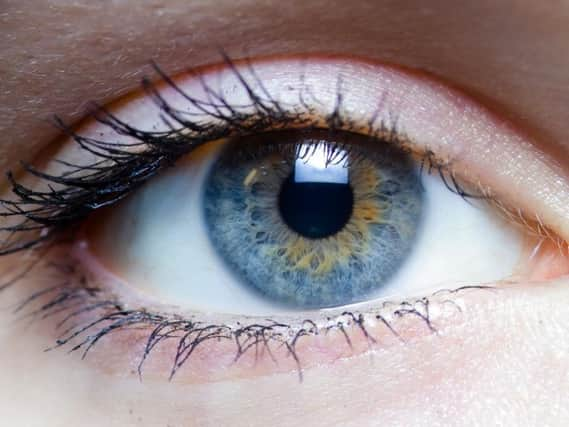Over million could be victims of sight loss epidemic, experts warn


Age-related macular degeneration (AMD) is currently the biggest cause of blindness in the developed world with more than 600,000 Britons affected by the disease.
And according to a report released by the Macular Society today, that figure is expected to more than double to 1.3 million by 2050.
Advertisement
Hide AdAdvertisement
Hide AdMichelle Dutton, the society’s regional manager for Yorkshire and the Humber, said the findings represented “an urgent public health issue”.
She added: “Unless strong action is taken right away we will be facing an epidemic in the decades to come. AMD is almost as prevalent as dementia and represents a huge cost, care and societal burden, yet it does not receive a level of research funding proportionate to its impact.”
In Yorkshire, more than 47,000 people are currently affected by AMD.
The disease costs the country £1.6bn annually with the drug costs alone standing at more than £200m a year.
Advertisement
Hide AdAdvertisement
Hide AdThe Macular Society claims research into the condition is still “shockingly” under-funded.
The report reveals that of the £22.7m spent on eye disease medical research in 2014, just £6m was spent on AMD.
The macular is located in the centre of the retina and is responsible for detailed central vision.
While sufferers of AMD are not completely blind, they can be left unable to drive, read or see faces. Many people affected describe losing their sight as being similar to bereavement.
Advertisement
Hide AdAdvertisement
Hide AdThere are two types of the condition, known as wet and dry AMD. The dry version is the gradual deterioration of the macula which develops over a number of years.
While in wet cases, abnormal blood vessels grow into the retina and leak blood or fluid, leading to scarring and a rapid loss of vision.
One of many thousands of people affected is 84-year-old Brian Goodall, from Wakefield, who was diagnosed with wet AMD two years ago.
The father-of-one said: “It came on very quickly. I was driving home from my daughter’s one night when I realised I couldn’t see the road properly. I lost my central vision within a week, it was very frightening.”
Advertisement
Hide AdAdvertisement
Hide AdMr Goodall has since had to learn to do simple tasks again such as crossing the road or shopping for groceries.
He said: “After I lost my sight what followed was two months of anger. Prior to my diagnosis I did painting and photography which I just had to give up overnight.
“But you have to remain positive in life. I have had a lot of support from various groups, which have helped me live with the condition.”
Martin McKibbin, a consultant at Leeds Teaching Hospitals NHS Trust, said: “With the increasing age of the population, AMD is becoming even more common.
Advertisement
Hide AdAdvertisement
Hide Ad“Despite the introduction of several treatment options, patients continue to lose vision in one or both eyes and there is a significant burden and cost to the NHS associated with chronic treatment.
“As a result, there is a need to understand the processes behind both wet and dry forms of AMD and to develop newer and more effective treatment options for each type.
“This can only be achieved with more research and by addressing the lack of funding currently directed to the disease. At present, both the individual and society are blind to AMD.”